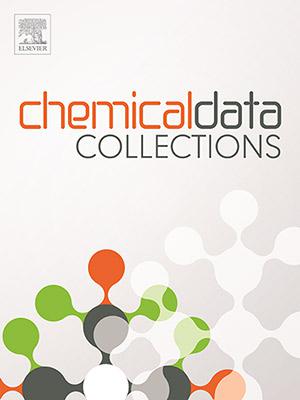Synthesis, In vitro biological evaluation and molecular modeling study of thiadiazole-sulphonamide hybrid derivatives as potential anti-Alzheimer agents
IF 2.7
Q2 Chemistry
引用次数: 0
Abstract
A series of thiadiazole-sulphonamide hybrid compounds (1–14) were synthesized, characterized through ¹H![]() NMR, ¹³C
NMR, ¹³C![]() NMR, HR-MS and evaluated against acetylcholinesterase (AChE) and butyrylcholinesterase (BuChE) enzymes. All analogues exhibited inhibitory activity, with IC₅₀ values between 1.40 to 11.40 µM (against AChE), and 3.70 to 16.20 µM (against BuChE), as compared to standard drug Donepezil (IC₅₀ = 2.16 and 4.5 µM, respectively). Several analogues demonstrated superior activity such as 2, 7, and 10 showed strong dual inhibition, with IC₅₀ values of 2.10, 1.80, and 1.40 µM, respectively (AChE), and IC₅₀ values of 3.70 ± 0.30, 4.20 ± 0.20, and 4.40 ± 0.10 µM, respectively (BuChE). Structure–activity relationship analysis revealed that specific substituents played a key role in enhancing enzyme inhibition. Additionally, molecular docking studies provided further insight into the interactions of the most potent inhibitors with the active sites of the target enzymes, which supported the experimental findings.
NMR, HR-MS and evaluated against acetylcholinesterase (AChE) and butyrylcholinesterase (BuChE) enzymes. All analogues exhibited inhibitory activity, with IC₅₀ values between 1.40 to 11.40 µM (against AChE), and 3.70 to 16.20 µM (against BuChE), as compared to standard drug Donepezil (IC₅₀ = 2.16 and 4.5 µM, respectively). Several analogues demonstrated superior activity such as 2, 7, and 10 showed strong dual inhibition, with IC₅₀ values of 2.10, 1.80, and 1.40 µM, respectively (AChE), and IC₅₀ values of 3.70 ± 0.30, 4.20 ± 0.20, and 4.40 ± 0.10 µM, respectively (BuChE). Structure–activity relationship analysis revealed that specific substituents played a key role in enhancing enzyme inhibition. Additionally, molecular docking studies provided further insight into the interactions of the most potent inhibitors with the active sites of the target enzymes, which supported the experimental findings.
噻二唑-磺胺杂化衍生物的合成、体外生物学评价及分子模型研究
合成了一系列噻二唑-磺胺杂化化合物(1-14),通过¹HNMR、¹³CNMR、HR-MS对其进行了表征,并对其乙酰胆碱酯酶(AChE)和丁酰胆碱酯酶(BuChE)进行了性能评价。所有类似物都表现出抑制活性,与标准药物多奈哌齐(IC₅₀分别= 2.16和4.5 μ M)相比,IC₅₀值在1.40至11.40 μ M(对AChE)和3.70至16.20 μ M(对BuChE)之间。几个类似物表现出优越的活性,如2,7和10表现出强烈的双重抑制作用,IC₅₀值分别为2.10,1.80和1.40µM (AChE), IC₅₀值分别为3.70±0.30,4.20±0.20和4.40±0.10µM (BuChE)。构效关系分析表明,特异性取代基在增强酶抑制作用中起关键作用。此外,分子对接研究进一步深入了解了最有效的抑制剂与靶酶活性位点的相互作用,这支持了实验结果。
本文章由计算机程序翻译,如有差异,请以英文原文为准。
求助全文
约1分钟内获得全文
求助全文
来源期刊

Chemical Data Collections
Chemistry-Chemistry (all)
CiteScore
6.10
自引率
0.00%
发文量
169
审稿时长
24 days
期刊介绍:
Chemical Data Collections (CDC) provides a publication outlet for the increasing need to make research material and data easy to share and re-use. Publication of research data with CDC will allow scientists to: -Make their data easy to find and access -Benefit from the fast publication process -Contribute to proper data citation and attribution -Publish their intermediate and null/negative results -Receive recognition for the work that does not fit traditional article format. The research data will be published as ''data articles'' that support fast and easy submission and quick peer-review processes. Data articles introduced by CDC are short self-contained publications about research materials and data. They must provide the scientific context of the described work and contain the following elements: a title, list of authors (plus affiliations), abstract, keywords, graphical abstract, metadata table, main text and at least three references. The journal welcomes submissions focusing on (but not limited to) the following categories of research output: spectral data, syntheses, crystallographic data, computational simulations, molecular dynamics and models, physicochemical data, etc.
 求助内容:
求助内容: 应助结果提醒方式:
应助结果提醒方式:


